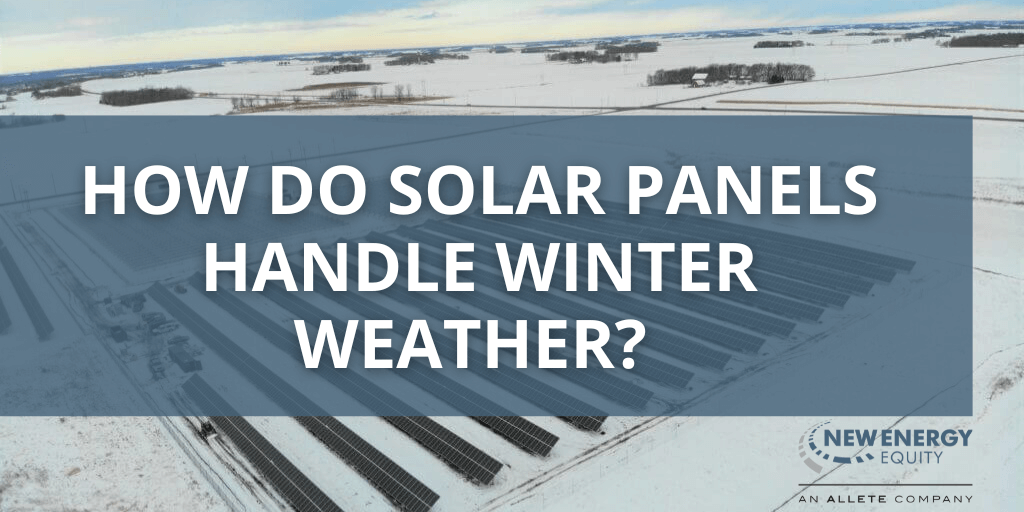New Energy Insights Blog

How Do Solar Panels Handle Winter Weather?
By: Caresse Reid
While it is expected that solar panels work well during the sunny summer months, their performance in winter often sparks curiosity. Despite the shorter days, lower sunlight intensity, and occasional snow and ice, solar panels are designed to withstand harsh weather conditions and are surprisingly adept at generating clean energy year-round.
The Impact of Winter Conditions
- Snowfall: Snow accumulation can temporarily block sunlight from reaching panels, reducing energy generation. However, angled installations often allow snow to slide off, and the reflection of sunlight off snow can enhance power production on sunny days after the snow clears. In many cases, shedding snow can help clean the panels, removing dirt and debris.
- Low Temperatures: Contrary to popular belief, colder temperatures can improve solar panel efficiency. Silicon-based panels perform optimally in cooler conditions and can operate at temperatures as low as -40°F.
- Less Daylight: Winter days are shorter, and sunlight intensity is lower. For instance, in Minnesota, the sun shines for about 8-9 hours in winter compared to over 15 hours in summer. Winter's clear skies can offset some of the reduced daylight with higher energy production efficiency, but the shorter days will still have a significant impact on production.
Ground-Mount vs. Rooftop Systems: A Winter Comparison
- Ground-Mount Systems:
- Ground-mounted solar systems are easier to access than rooftop systems, but O&M providers often choose to allow the snow to melt off the panels naturally. The cost of traveling to the site and clearing the snow manually would outweigh any extra production gained.
- Ground mounted systems that use trackers to follow the path of the sun may face issues when there is extreme snow buildup on the ground that impedes the movement of the tracker. Since panels in these systems sit 2-3 feet off the ground at max tilt, instances of snow blockage are rare.
- Rooftop Systems:
- Rooftop systems can be more susceptible to snow accumulation since they are less accessible.
- On sloped roofs, the tilt of the roof often aids in shedding snow, but excessive snowfall or ice buildup can still reduce energy production.
- Systems on flat roofs are typically installed on tilted racks to capture sunlight effectively. However, these setups may allow snow to accumulate around the base of the tilt structure, requiring regular clearing to maintain output. Additionally, the weight of heavy snow may exert pressure on the roof and panel mounts, highlighting the importance of proper structural engineering.
Optimizing Winter Solar Performance
- Production Modeling: The engineering team will account for local weather conditions and take snow into account when they estimate how much a solar array is going to produce in a year.
- Inverter Efficiency: Modern inverters are designed to work well in cold temperatures and are typically rated to operate down to -22°F. However, extremely low temperatures can slightly reduce their efficiency.
- Battery Storage: Adding batteries ensures that energy generated during shorter days or sunny periods can be stored and used during peak demand times.
- Regular Maintenance: Keeping panels free of debris and ensuring snow removal (if safe) can maximize energy production year-round.
- Design Considerations: Installing panels with optimal tilt and orientation helps maximize sunlight capture during low-angle winter sun.
While winter months present challenges, they also offer opportunities for solar systems to excel under certain conditions. By understanding the factors that affect winter performance and taking appropriate measures, such as regular maintenance and snow removal, homeowners and businesses can maximize the benefits of solar energy, even in the coldest months.
